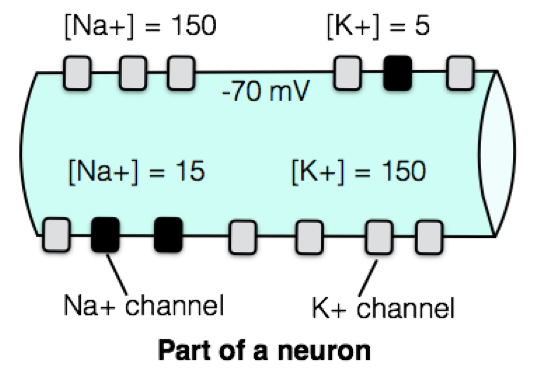Resting membrane potential
Q.
The figure shows part of a neuron with the following labeled:
● Sodium ion (Na+) and potassium ion (K+) concentrations (measured in mM)
● Resting membrane potential (-70 mV)
● Na+ channels (black boxes) and K+ channels (gray boxes)
The resting membrane potential of a neuron is -70 mV. At rest a neuron has many more open K+ channels than open Na+ channels. However, at this time the rate of K+ moving out of the neuron is equal to the rate of Na+ moving into the neuron. Explain how K+ and Na+ can be moving across the membrane at the same rate if there are many more open K+ channels than open Na+ channels?
